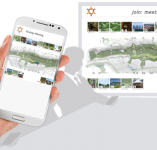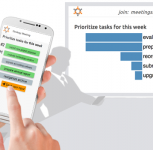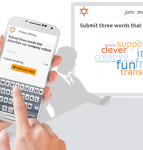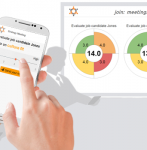We’ve all been there before, whether in business, school, or a social situation. Someone asks the question, “What should we do?” “Where do we go?” “What’s next?” and immediately something brilliant pops into your head. And then, as if by some weird twist of fate, just as you are about to pose it, someone else blurts out a their response. Instantly, everyone in the room begins to nod in agreement, and rather than present your idea or option, you simply nod your head in approval as well to go along with the crowd.
Too often, those scenarios—especially in business—limit the impact, innovation, cost savings or product enhancements that could have significantly grown your business. That cost savings program might still be implemented, but it takes months longer to get proposed and discussed, or worse, misses a key element that the “wisdom of the crowds” should have filled in and addressed.
Achieve consensus without political influence
The CPA Journal—an online publication of the New York State Society of Certified Public Accountants—recognizes from their many years of experience the value in anonymous voting in meetings. In their abstract on Group Support Systems (GSS—collaborative software tools that enhance group work), they state their case: “A GSS uses computer hardware, computer software and network technology to allow meeting participants to exchange ideas without the fear of rejection, to achieve consensus that is free from political influence and to express their opinions simultaneously without the risk of miscommunication” (Watson).
It’s funny to think that the run of the mill suggestion box could pave the way for process innovation, but when you look at how a person interacts with the box, many of the principles are grounded in the social science that would enable greater individual participation. Let me explain.
Exchange ideas without fear of rejection
Anonymity, in its simplest form, allows someone to not stand out in any way—to “have no outstanding, individual or unusual features” (thanks Google). For anonymity to work in a business setting, the person needs to remain veiled in the process, to be protected, so that the idea being offered can be heard without fear of reaction or repercussions. The same could be said of ideation. The moment I walk up to a whiteboard and write down my first thoughts, I am no longer allowing the idea to stand alone for evaluation. Someone suggested it and we all know who that is. Good or bad, we have preconceptions and begin to draw conclusions (or at least exhibit emotions) around the author of the idea.
Express your true preference when voting
The Association for Women in Science (AWIS), in their article “The Best Practices for Awards Process,” supports the importance of anonymous polling: “Voting: Anonymous voting encourages individual members to express their true preference rather than voting with the group, as influenced by political or social dynamics” (AWIS).
When I walk up to that suggestion box, no one else knows what I am writing or how impactful the idea I place in the box will be. I am protected and free to share anything, and that idea gets to stand on its own legs, separate from me. Though the suggestion box is flawed because of its limited reach, if we could mirror that in today’s modern mobile setting, we could bring everyone’s voice into the conversation. MeetingSift offers the opportunities to do just that.
Technology makes it easy
By bringing technology into the process we can easily ideate, discuss, refine and agree to a particular option quickly and efficiently—assuming that we can mimic that same ‘suggestion box’ functionality—and allow the idea to stand on its own merit, separate from the author. Doing this efficiently at scale allows us to quickly poll dozens or even hundreds of users, in a room or around the globe, and harvest the best of the best of their observations, ideas and solutions to our most pressing business issues.
So the next time you are presented with a challenge, issue, or opportunity to tackle within your enterprise, take action to avoid the pitfalls of knowing who voted for what, and see how collaboration technologies like MeetingSift can transform the process, engage more participants, and make the entire experience more effective.
ANONYMOUS DECISION MAKING TOOLS
MeetingSift lets your meeting attendees participate anonymously in decision making via their own smart devices (smart phone, tablet, laptop, or other internet enabled device). This lets them keep their focus on the issue rather than office politics. Use MeetingSift’s collaborative group activities to anonymously brainstorm suggestions, rank issues, poll options, evaluate alternatives, and get better results.












